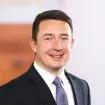A recent order from the District of Delaware in Evolved Wireless, LLC v. Apple Inc., No. 15-00542 ("Evolved Wireless") provides interesting guidance regarding the use of future sales in calculating lump-sum damages. This order suggests that a damages expert's lump sum payment structure is not unreliable simply because it takes into account future sales of potentially non-accused products. The court concluded that any alleged flaws in the expert's methodology go to credibility—issues typically left for the jury to weigh—and not admissibility.
In Evolved Wireless, Evolved filed a patent infringement suit asserting its patents directed to Long-Term Evolution ("LTE") wireless communications systems. These patents are essential to the 3GPP 36 series technical specifications, which include the LTE wireless communication standard. Apple moved to preclude testimony of Evolved's damages expert, Dr. Putnam, for his lump sum damages methodology. (Dkt. 275.) While the briefing is sealed, it appears that Dr. Putnam's lump sum payment methodology utilized Apple's past sales of the accused products to forecast future sales.
Apple criticized this methodology because it appeared to capture future sales on non-accused products since the calculation assumed that the accused product will continue to be sold through 2026. This did not take into account Apple's routine business practice of phasing out older products every few years as new versions of the product line are released. As a result, Apple argued that Evolved would be capturing future sales of non-accused products. This argument assumed, of course, that the future products would not infringe the asserted patents.
Evolved countered that Apple's argument conflated the running royalty calculations with lump sum damage calculations. According to Evolved, lump sum payments may consider sales of future products, whereas running royalty calculations cannot. Therefore, "Dr. Putnam was justified in looking to forecasts of Apple's future LTE sales to support his lump sum calculation." (Order at 8). Additionally, Evolved argued that any alleged flaws in Dr. Putnam's calculation is a credibility question that should be left for the jury to weigh.
The court agreed with Evolved and concluded that any potential flaws in the expert's damages theory goes to its credibility before the jury, not admissibility. The court noted that the parties may cross-examine experts, present contrary evidence, and seek cautionary jury instructions to prevent any risk that the jury might be misled.
This order illustrates that an expert's damages calculation method that includes future sales of potentially non-accused products is not per se unreliable as Apple argued. Nor is it subject to a Daubert motion on this ground alone. The jury must assess the credibility of each damages expert, which may entail weighing evidence of product forecasts and potential sales years into the future. While Apple argued in its motion papers that the accused products likely will not infringe the asserted patents in twenty years, this is a question for the jury to decide. This case is also a good example of a court trusting the jury to assess the credibility and strength of the parties' experts and their competing theories. However, we can likely expect Apple to test this ruling on appeal.
The content of this article is intended to provide a general guide to the subject matter. Specialist advice should be sought about your specific circumstances.



